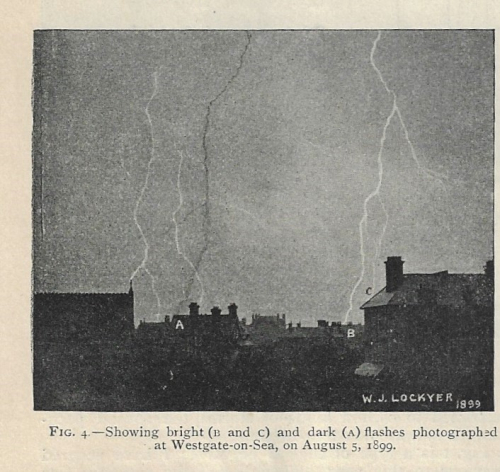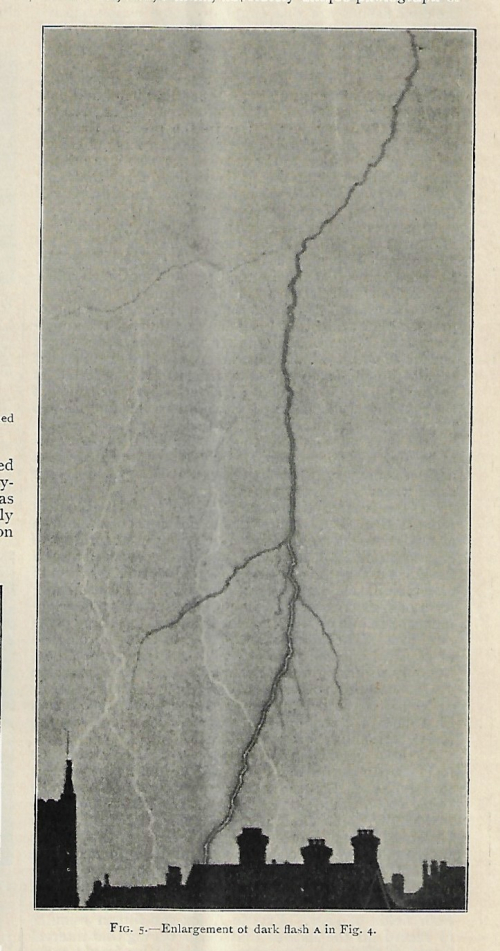William J.S. Locker, Dark Lightning Flashes”, in Nature, vol 60, no. 1563, pp 570-574 in the weekly issue of pp 565-588. Self-wrappers, removed from a larger bound volume. Good condition, with the spine reinforced with acid free semi-transparent Japanese paper tape. $25
Lockyer publishes a series of interesting photos in support of a photo/chemical explanation to “dark lightning” rather than a physical one.
“IS there such a phenomenon as dark lightning? This is a question that has often been raised, and as yet no satisfactory answer has been given. If dark flashes do really occur, then they should probably be both seen and photographed, and the former, one would think, would be the more simple way of recording them.”
“If the lens of the camera be covered the moment after a flash has occurred the developed image will always come out bright, feebly or strongly, according to
circumstances. If, however, the plate be exposed after a flash has acted upon it, either to the continued action of a feeble diffused light or to the powerful glare arising from one or more subsequent flashes, then on development the image of the original flash will probably come out black. The effect is therefore not a meteorological or physical one, but purely chemical. It can be obtained, not only with a lightning flash, but also with a machine spark, or even with an ordinary flame. It is merely necessary that the plate should be exposed to the action
of a certain amount of light after it has received the impression and before development.”






Comments